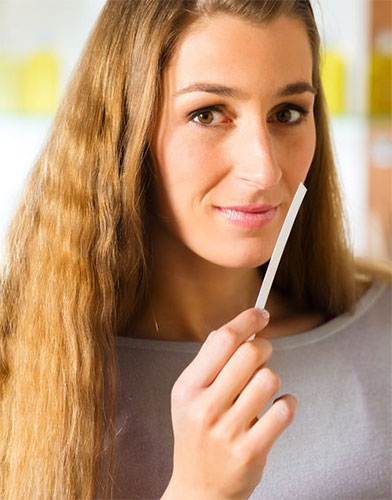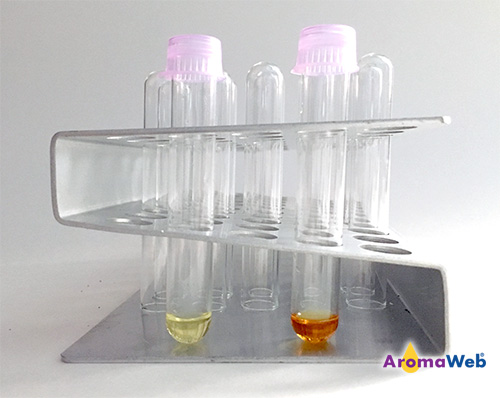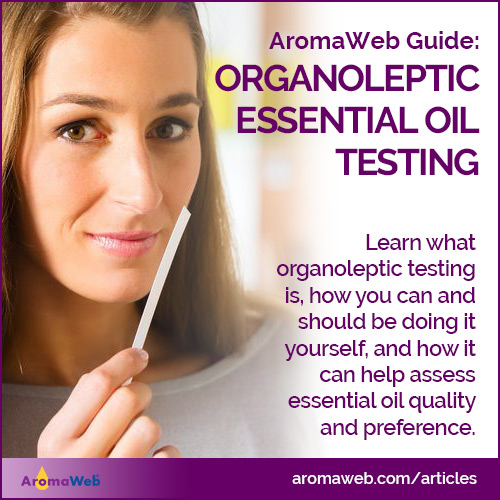Organoleptic Essential Oil Testing
Within the scope of essential oil assessment and testing, the term organoleptic refers to using our five senses to observe the physical properties of an essential oil:
- Aroma
- Color
- Texture
- Viscosity
- Taste and Flavor (However, essential oils should not be ingested or taken internally by those that have not been trained in internal use or are not under the care of a qualified practitioner.)

Naturally, the most important of our senses for physically testing an essential oil is our sense of smell, olfaction. However, the color, texture, thickness (viscosity), and taste of an essential oil can also reveal important information about the quality and physical characteristics of an essential oil.
Quantifiable testing that includes GC analysis, optical rotation and refractive index are important processes in assessing an essential oil.
However, organoleptic testing is also an important step in determining the quality, benefit and gratification that an essential oil can offer or when comparing two essential oil samples distilled from the same botanical. An essential oil sample, for example, may look fine when analyzed by GC, but the essential oil may seem aromatically flat or may not be "up to snuff" aromatically.
Organoleptic testing is highly subjective, but it is still a very helpful and necessary part of evaluating essential oils. In addition to quantifiable testing, reputable distillers and suppliers also use organoleptic testing to assess the quality and characteristics of essential oils.
As users of essential oils, we can and should also utilize organoleptic testing to evaluate essential oils. We actually all perform some level of organoleptic testing on each of the essential oils we experience. You don't need to enroll in a formal class to get started organoleptically testing essential oils, but studying with a reputable school will certainly give you a stronger foundation and much more guidance in the process than I can cover within this guide.
Organoleptic testing can be as casual or as formal as you would like it to be when assessing your own essential oils. Keeping a log of your own personal assessments of each of the essential oils you work with can help you grow in your own organoleptic testing abilities. The more organized and detailed you are, the more helpful your assessments will be for your own current and future reference. Observe how aromatherapy experts, authors, educators and reputable essential oil suppliers physically describe essential oils. Practice making and logging your own assessments. Review them over time and make observations of how your own essential oils change over time.
Aroma:
Using Lavandula angustifolia (Lavender) as an example, the aroma of one particular sample can be quite different from another. The climate, altitude, growing conditions, expertise of the distiller, age of the oil and numerous other factors can impact the essential oil quality and the aroma of an essential oil. As you grow in experience working with essential oils, your nose will become more "sophisticated," and you will be able to intuitively assess and describe the aroma of essential oils more easily than when you first begin working with them. For more information on aromatic assessment, refer to AromaWeb's Guide to Evaluating the Aroma of an Essential Oil.
Color:
Inspecting the color and clarity (i.e. is there sediment or cloudiness?) of an essential oil can be helpful in determining if an essential oil is potentially problematic. Some oils become darker as they age (see photo). Aging essential oil may also appear cloudy and may become more vicious (thick).

Left: Lemongrass Oil Distilled Approximately Two Years Ago. Right: Lemongrass Oil Distilled Approximately 22 Years Ago.
Texture:
Unlike carrier oils, essential oils aren't really oily to the touch. I don't actually recommend "touching" undiluted essential oils, but you can get a general idea by placing a drop or two of an essential oil on a fragrance strip and observe how it evaporates over time. If it leaves an oily ring, it might be a blended oil. I recommend practicing this technique with essential oils that you know are undiluted and that are sourced from reputable suppliers so that you are familiar with what to look out for.
Viscosity:
Loosely speaking, viscosity refers to the thickness of an essential oil or other fluid aromatic. For example, you should observe that patchouli, sandalwood and most CO2 totals are more vicious (thick) than peppermint essential oil.
Taste and Flavor:
Organoleptic testing relates to all of the senses, so I'm mentioning taste and flavor here. However, essential oils should not be ingested or taken internally by those that have not been trained in internal use or are not under the care of a qualified practitioner.
Organoleptic Testing for Carrier Oils
Although this article is devoted to the organoleptic testing of essential oils, organoleptic testing is also important for the assessment of carrier oils (vegetable oils).
This topic consists of several separate related articles. Use the links shown below to navigate through the series.
Next: Part 9: Other Quantifiable Tests for Testing the Quality and Purity of Essential Oils
- Part 1: Introduction
- Part 2: Why Is the Quality/Purity of an Essential Oil Important?
- Part 3: Aren't Most Essential Oils Pure?
- Part 4: Constituents - What do Essential Oils Consist Of?
- Part 5: Quality vs. Purity - Aren't They the Same Thing?
- Part 6: Quantifiable Testing of Essential Oils
- Part 7: GC-MS and GC-FID Test Results: How to Understand and Use Them
- Part 8: Organoleptic Testing of Essential Oils
- Part 9: Other Quantifiable Tests for Testing the Quality and Purity of Essential Oils
- Part 10: Essential Oil Quality and Purity Conclusion: Final Questions/Answers
